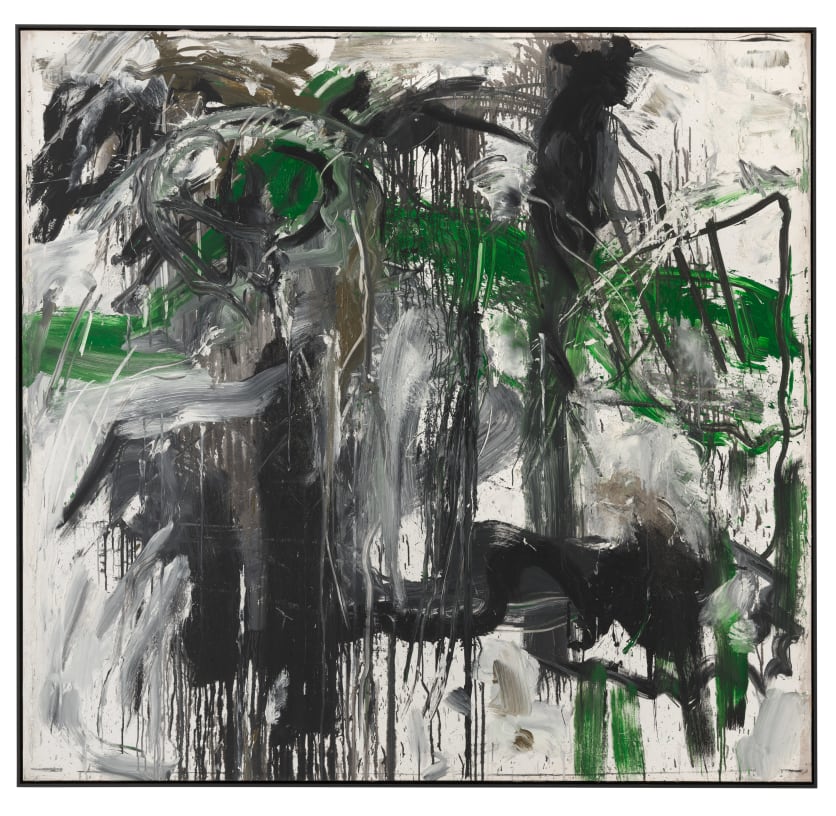Overview
Thaddaeus Ropac Salzburg will present previously unexhibited works by Emilio Vedova, ranging from 1986 to the realisation of his monumental painted pentaptych titled Venezia muore, completed in 1992.
Vedova persistently challenged the potential of materials and his mixed-media approach to artmaking was a fundamental aspect of his practice throughout his career. Continuously influenced by the city of his birth, Venice, with its rich cultural heritage, he was largely self-taught as an artist. His earliest artistic endeavours in the mid 1930s include drawings of Venetian architecture and frescoes, particularly those of Tintoretto who was a key inspiration to the artist throughout his life. Strongly guided by his moral and political beliefs, Vedova’s works are characterised by his response to the political reality of the post-war period. The works in the exhibition further reveal an increased preoccupation with existential questions and show that for Vedova gestural abstraction was a vehicle for expressing the complexity of lived human experience.
Thaddaeus Ropac Salzburg will present previously unexhibited works by Emilio Vedova, ranging from 1986 to the realisation of his monumental painted pentaptych titled Venezia muore, completed in 1992.
Vedova persistently challenged the potential of materials and his mixed-media approach to artmaking was a fundamental aspect of his practice throughout his career. Continuously influenced by the city of his birth, Venice, with its rich cultural heritage, he was largely self-taught as an artist. His earliest artistic endeavours in the mid 1930s include drawings of Venetian architecture and frescoes, particularly those of Tintoretto who was a key inspiration to the artist throughout his life. Strongly guided by his moral and political beliefs, Vedova’s works are characterised by his response to the political reality of the post-war period. The works in the exhibition further reveal an increased preoccupation with existential questions and show that for Vedova gestural abstraction was a vehicle for expressing the complexity of lived human experience.
The canvas represented a field of action for Vedova’s existential expressions. Influenced by alchemy and, specifically, the proximity of the sea that encompasses his hometown, the abstract paintings from this period are characterised by the artist’s use of acrylic and nitro paint. The repellent qualities of these two materials allows them to settle with a ghostly materiality on the surface of the canvases, which finds its echo in works by Anselm Kiefer and Sigmar Polke. The crystalised appearance of Vedova’s brushstrokes recalls the delicate crust or flower-like patterns of salt sedimentation, alluding to the sea’s relentless accumulations, destructions and corrosions. The intense, gestural expressiveness of his mainly monochrome canvases and the energy of his technique evoke a profound emotional impact, conveying a feeling of distortion of the environment and one’s self, as well as the overall anguish of modern humanity.
In Venezia muore, the monumental five-part work from 1992 that lends the exhibition its title, themes of decomposition and decay play a prevalent role. Initially envisioned as a totem-like installation of boat wrecks recovered from the swamps around Venice, Venezia muore refers to the decadence and downfall of the city and the enduring erosion of time. The five monochrome paintings are likewise informed by Vedova’s personal experiences of destruction during the Second World War and the time he spent working in the devastated city of Berlin during the 1960s. Furrowed lines span a seemingly battered pictorial surface, resulting in a luminous cosmic landscape that summons themes of slow disintegration.
Vedova was a constant innovator when it came to defining the spatial scope of his work, as many of his installations and fundamental explorations of the circle attest. Initially scaled to the size of his own body, these bifrontal panels or tondi (meaning in Italian ‘round’) allude to Leonardo Da Vinci’s Vitruvian man (c. 1490) as well as circular works by Michelangelo or Raffael. Vedova challenged this shape through his compositions as a symbol of perfection and cosmic harmony at odds with his view of a lacerated, asymmetrical and volatile universe. The exhibition features four round works on wood, which can be installed on the wall as well as the floor, thus questioning space and the viewer’s movement in relation to the works.
One work in the exhibition, also titled Venezia muore (1992), features sculptural elements reminiscent of Robert Rauschenberg’s iconic Combines (1954–64). The rope and splinters of wood attached to the painted canvas allude to the maritime motif initially envisaged for his installation of revived boats. By combining aspects of both painting and sculpture in a single work, Vedova blurred the boundaries between these artistic categories, while evoking archaic images of deep sediments and the ever-moving waters. Throughout his oeuvre, Vedova explored ways in which, as an artist, he could respond to the turbulent political and social challenges of his time, reflected in the ideas of decadence and demise expressed in the works on view in the exhibition.
Exhibited in Salzburg for the first time, the works will be on view from 28 January until 18 March 2023. Vedova was closely connected to the city of Salzburg during his lifetime, having taught at the Summer Academy of Fine Arts for the duration of five summers between 1965 and 1969 following the departure of the academy’s founder Oskar Kokoschka.


















































































































































































